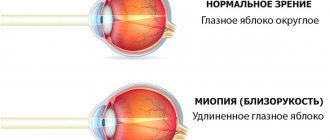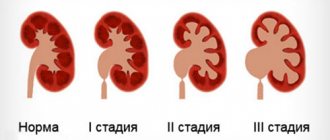Types of vegetative-vascular dystonia (VSD)
Depending on how the cardiovascular system reacts to a disorder of the autonomic nervous system, 4 types of VSD are conventionally distinguished: hypertensive, hypotonic, cardiac and mixed. A more detailed study of the signs of vegetative-vascular dystonia made it possible to identify 3 more types of disorder: vagotonia, cerebral-type VSD and somatoform dysfunction.
This typology is outdated, however, it allows you to classify all symptoms of VSD. The problem of diagnosing autonomic dysfunction is acute, and patients often become victims of ignorance or inattention of doctors. Let's figure out what symptoms may indicate the presence of one or another form of autonomic dysfunction.
VSD of cardiac type
In the cardiological (as well as in the hypertensive) form of autonomic dysfunction, the diagnosis will most likely show obvious sympathicotonia, that is, functional tension in the work of the sympathetic department of the ANS. A distinctive feature of VSD of the cardiac type is pain in the heart area (stabbing, pressing or burning sensations in the chest area). Signs may resemble those of an angina attack or myocardial infarction. But upon examination, cardiac pathologies are not detected.
The cardiac type of reaction to a vegetative-vascular disorder is characterized by: tachycardia, cardiac arrhythmia, false pain in the heart area, as well as respiratory arrhythmia and asthma attacks. It is important to understand that with VSD, pain in the heart area is not a harbinger of a heart attack and does not in any way affect the cardiovascular system, which will be confirmed by the patient’s echocardiogram. Cardiac rhythmography is very effective in diagnosing this type of VSD.
Features of managing a pregnant woman
If a woman was diagnosed with dystonia before pregnancy, then with its onset the symptoms may worsen. It is also possible that the patient had already managed to get rid of VSD syndrome earlier, but the signs began to appear again during pregnancy. The development of severe fatigue, increased sweating, blood pressure lability and edema should alert both the patient and the doctor.
In addition, one should not take the emotional state of a pregnant woman lightly. Tearfulness, irritability, stress and other signs can lead to depression, which in turn affects the development of the fetus.
Treatment of VSD during pregnancy largely involves normalizing lifestyle. Adequate sleep and rest, absence of emotional stress, adherence to a daily routine and adequate physical activity are necessary. Proper and timely nutrition also plays a special role.
Each type of VSD requires a special approach to treatment:
- if dystonia develops of the hypotonic type, the patient is recommended to do slow jogging, dancing, and walking. Food products include daily consumption of meat, milk, cheese, cottage cheese, buckwheat, chocolate and tea;
- VSD of the hypertensive type can also allow swimming and hiking. In your diet you need to limit your intake of salt, liquids, sugar and spices. The diet should contain dairy products, vegetables, meat and cereals.
Treatment of dystonia with folk remedies is very popular: for the hypotonic version of VSD, barberry is used, for the hypertensive version, hawthorn is used in the form of decoctions or tinctures.
All described tips should be followed only after consulting a doctor. It is he who draws up a physical activity plan and diet, taking into account possible contraindications. In addition, the doctor additionally monitors the child’s development, the risk of fetal death in the early stages and other points.
All measures for the prevention and recovery of pregnant women with VSD:
- correct daily routine - sleep at least eight hours, alternating work with rest;
- walks in the open air;
- physical activity (morning exercises, race walking or running);
- massage (especially necessary for concomitant osteochondrosis);
- use of sedatives, such as music therapy;
- proper nutrition.
The most important condition for the normal course of pregnancy with VSD is monitoring the course by a doctor and the absence of self-medication.
VSD of mixed type
Depending on how the cardiovascular system reacts to a disorder of the autonomic nervous system, the 3 types of VSD described above are conventionally distinguished. But, as a rule, vegetative-vascular dystonia includes several types of symptoms at once.
The mixed type is characterized by a combination of the above symptoms. Blood pressure “jumps”, a person feels sometimes depressed, sometimes irritated, sometimes experiences weakness, sometimes excessive emotional overexcitation, and his mood changes sharply. With a mixed type of VSD, the whole spectrum of symptoms can manifest itself: cardiac and respiratory arrhythmia, panic attacks, pain with vague localization. This type of autonomic disorder is the most common.
VSD during pregnancy
The debate about whether there is such a disease as vegetative-vascular dystonia has not subsided for many years. The term “VSD” was popular at the end of the twentieth century in the USSR, however, both at that time and today, Western doctors denied the existence of VSD as a separate disease. In previous years, the diagnosis of “VSD” covered a considerable number of various diseases, so the treatment that was prescribed often not only did not help, but also aggravated the condition of the patients. Currently, the global medical community believes that vegetative-vascular dystonia is a complex of dysfunctions of the cardiovascular system, which often manifests itself in the neurological sphere. According to international medical standards, it is more correct to consider such a health disorder not as a separate disease, but as a syndrome.
Scientists call the cause of this syndrome problems in the structure or functioning of certain parts of the human nervous system. The mechanism of development has not been fully studied to date. VSD syndrome rarely occurs for any one reason; more often the cause is a group of factors. It is known that stress, especially chronic stress, plays a huge role. The development of the syndrome is also influenced by past infectious diseases, some injuries (affecting the brain and bone marrow), less often the cause is the negative influence of the environment. One way or another, the functioning of the autonomic nervous system is disrupted, and in response there is a surge in pathological reactions and failures in the cardiovascular system.
- The manifestations of such violations can be very different (there are more than 150 of them in total), but most often they are:
- - headache,
- - dizziness,
- - weakness, fatigue,
- - bad mood, anxiety, excessive sensitivity,
- - increased heart rate,
- - fainting,
- - difficulty breathing,
- - change in complexion (pallor or, conversely, redness),
- - chills,
- - intestinal dysfunction.
Doctors make the diagnosis of “VSD syndrome” when they exclude all other possible causes that could give rise to such painful manifestations. Signs of VSD syndrome can be found in 70% of women.
Based on the grouping of symptoms, it is customary to distinguish several types of VSD syndrome. Classification varies, but most often the main types are called:
— Cardiac (the patient complains of interruptions in the heart rhythm, tachycardia, pain and heaviness in the chest, lack of air).
- Hypotonic (characterized by inhibited reactions, drowsiness, pallor, fainting, a sharp decrease in pressure).
— Hypertensive (due to vasoconstriction, even with minor physical activity, pressure increases significantly, heart rate increases, and headaches occur).
- Mixed (the most common type of VSD syndrome: combines symptoms of several types, attacks sometimes differ significantly from time to time).
Typically, dystonia during pregnancy complicates the nine months of waiting for a baby. It is impossible to say in advance how a particular organism will behave during pregnancy, but different types of syndrome require different approaches to its treatment, and many standard regimens are contraindicated during pregnancy. Drugs should be taken as a last resort, but even without them there are many ways to affect the body.
For example, with hypotension, hypoxia often occurs - a lack of oxygen, which is harmful for both the expectant mother and the child. Therefore, reasonable physical activity is important - moderate walking, water aerobics, swimming - and proper, timely nutrition (not only fresh seasonal vegetables and fruits of good quality, but also cereals, meat, milk). If a woman suffers from toxicosis and eats little, VSD syndrome can make her life simply unbearable. It is necessary, together with your doctor, to choose a diet that will meet the body’s needs and help you feel good.
With the hypertensive type, you should be wary of anemia, blood flow disorders, placental abruption and the development of late toxicosis, which means you need to do your best to fight edema, limit salt in the diet and be extremely careful about physical activity. Rapid weight gain should be absolutely excluded. In late pregnancy, it is advisable to undergo regular Doppler examinations. Hormonal changes in the female body against the background of this type of VSD syndrome are very difficult, and bed rest is the first assistant in such a difficult time. A hot heating pad applied to the back of the neck will help reduce pressure.
For cardiac type, it is best to use massage. A competent specialist will be able to have a beneficial effect on the cardiovascular system and alleviate the condition of the pregnant woman. A woman with the cardiac type of VSD syndrome should be especially careful about water procedures, because changes in water temperature may worsen the syndrome. A lot of fresh air (if it is not possible to walk, you should ventilate the room as often as possible) and sufficient sleep can work wonders for the well-being of a pregnant woman.
An integrated approach will help to cope with the mixed type of VSD syndrome, which will take into account all the individual characteristics of the patient.
A general recommendation for expectant mothers is to take vitamins and sedatives. Simple medicines such as valerian and motherwort tablets are very effective if you alternate them every ten days. The emotional state of the expectant mother has a huge impact not only on her own well-being, but also on the baby.
VSD during pregnancy can certainly be called a risk factor, because the load on the female body during the period of bearing a child increases many times over. But a positive attitude and attentive attitude of the woman and her doctor to various symptoms guarantee a decrease in the likelihood of developing serious vascular diseases and neurological problems. The key to success in the fight against VSD syndrome is unoriginal - a full, healthy lifestyle.
VSD of vagotonic type
Vagotonia is characterized by a wide variety of symptoms, which can raise suspicion of serious diseases of the heart, endocrine or respiratory system, diseases of the gastrointestinal tract or even the psyche. A thorough examination does not reveal any pathologies in the organs and systems of the body. And as a “diagnosis of exclusion,” the patient is diagnosed with “VVD of the vagotonic type.” Indeed, a variety of symptoms that do not fit into a single pathological process are caused by vagotonia - hypertonicity of the vagus nerve (“vagus”). The vagus nerve regulates the activity of organs, glands and blood vessels, and an increase in its tone causes spasm of smooth muscles throughout all structures of the body.
With this type of VSD, the activity of the parasympathetic part of the nervous system predominates (over the sympathetic), which will be confirmed by the diagnosis of CRH. A person becomes apathetic, unsure of himself, suspicious, suffers from hypochondria, suspecting that he has the most terrible and, perhaps, still unknown disease. Memory for specific things often deteriorates: numbers, dates, details, and mental activity decreases.
Physical symptoms are bradycardia, hypotension, vestibular disorders (dizziness and fainting), fatigue, shortness of breath, pale skin, cold extremities, non-localized pain in the abdomen and chest. Despite the broken state, the person experiences difficulty falling asleep and does not sleep well during the night. In advanced cases, patients experience panic attacks, depression and suicidal tendencies. Symptoms can appear in a complex manner, or they can be localized - when complaints are limited to one of the organ systems. The disease can be chronic or manifest itself in the form of outbreaks, vegetative crises, when the condition sharply worsens. In vagotonic children, the pathology also manifests itself in an abundance of allergic reactions.
VSD of cerebral type
With vegetative-vascular dystonia of the cerebral type, the tone of the blood vessels in the brain is disturbed. The blood vessels spasm, which leads to disruption of blood supply and nutrition to the brain. Cells lack oxygen, and blood flow deteriorates.
The primary symptoms are headaches, dizziness, blurred vision, noise and pounding in the ears, and nausea. Other symptoms of VSD may also appear: pain in the heart, tachycardia, vascular instability (bouts of heat, sweating, pale skin), difficulty breathing, shortness of breath and a number of other symptoms. According to cardiac rhythmography data, VSD of the cerebral type will be expressed by hyperactivity of waves from the autonomic centers of the brain and, possibly, sympathetic waves.
Can the patient carry a child?
The opinion that pregnancy with VSD is accompanied by complications is not erroneous, so women suffering from this syndrome are afraid to give birth. Fear can also appear in girls who are just planning to get pregnant.
When a woman has a history of vegetative-vascular dystonia, there is an additional risk of developing arterial hypertension during pregnancy, especially if VSD manifests itself in the hypertensive type. In this case, congenital abnormalities of the placenta are likely to occur. In the later stages, these patients may develop gestosis (preeclampsia and eclampsia), which are accompanied by a high risk of premature birth.
But this does not mean that you cannot give birth. Correct behavior during pregnancy and avoiding self-medication will help you carry and give birth to a healthy baby.
Somatoform dysfunction
With somatoform dysfunction, a person usually complains about a specific organ or group of organs that are regulated by the autonomic nervous system. These may be complaints about the cardiovascular, gastrointestinal, respiratory or genitourinary systems. The patient associates his condition with a physical disorder, but based on the results of the examination, the doctor finds no reason for it. The true cause of the malaise is a disruption in the functioning of the autonomic nerve centers. In addition to subjective localized pain, heaviness, burning or tension, specific symptoms of VSD can be easily identified among the patient’s complaints.
The variety of symptoms of autonomic dysfunction makes it difficult for the doctor to get to the root cause of the disease. Therefore, in addition to collecting anamnesis, it is important to conduct instrumental studies of the functioning of the autonomic nervous system. Find out more about diagnosing autonomic disorders.
conclusions
In recent years, there has been a significant increase in the incidence of VSD in pregnant women. This is due to scientific and technological progress, urbanization, increasing levels of psycho-emotional stress, poor ecology, family circumstances, etc. In order to avoid the negative impact of the problem on the course of pregnancy and the condition of the fetus, it is necessary not only to prevent it in time, but also to carry out complex psycho-, herbal and physical therapy when symptoms appear or worsen. An important rule for prescribing treatment is the absence of spontaneous decisions. They can cause harm to the mother and the child who is in her womb and is subject to numerous influences, both positive and negative.







